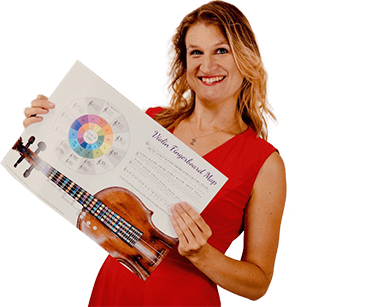To Shift or NOT to Shift: How to know when to change positions on the violin? | Violin Lounge TV #383
Here’s how to choose the best fingering for the music you play and choose exactly when to shift positions on the violin:
Here’s why and when you have to shift positions as a violinist:
#1 When you HAVE to
There are many high notes you can’t play in the first position.
#2 When it sounds better
For example you might choose for the specific sound of a certain string, like fragments played ‘sul G’ (on the G string).
#3 When it’s handier or easier to use a certain fingering
For example to avoid string crossings.
Support my work by sharing this post on Twitter:

Hi! I'm Zlata
Classical violinist helping you overcome technical struggles and play with feeling by improving your bow technique.
All music examples in this video are from the Meditation from Thaïs by Massenet.
If you want to learn this piece, watch my extensive tutorial right here.
Choosing your fingering as a violinist is very personal and part of interpretation
You’ll become better at it with more experience. The experience with solo pieces is different from the experience in an orchestra. Usually in an orchestra you’ll go for what’s handy. In a solo piece, you’ll choose based on expression.


Hi Zlata,
All your points on when to shift are certainly valid but the other issue is how comfortable one is playing is another position and how that affects intonation. For example, certain shifts are easier than others, like half steps away or second finger to second finger. I’m currently learning the Double Presto movement in the Bach Partita No. 1. There are certain places where I just continue to stumble when I try to use the 2nd position fingering my teacher recommended. I practice and practice but it just doesn’t make sense to me. (And, of course, my tempo is NO WAY NEAR to presto!!)
Yes, we should each choose what’s easier for us and indeed it differs per person what shifts are handy for you. Or… we can notice that one position or one particular shift needs more work and we can practice this with exercises and etudes. Happy practicing on the Bach!
Zlata, if I had a teacher and told her how I was going to play, she would probably ping me over the head with my own bow. And rightfully soo.
Oh, you would be surprised how many students do, hahaha, now you know the REAL reason why I have a carbon bow ;).
May I ask if you use a carbon fibre bow. If so which one
Thanks Terry
Hi Terry, yes, I personally use an Arcus S9 and if you’re looking to buy a carbon fiber bow, find my reviews and recommendations in different price ranges right here.
May I ask I know how to shift I am okay with knowing the notes on those positions but, when do I REALLY need to use them because I want to but I do not know when or where.
Every shift needs to be practiced separately. Shift with the ‘old’ finger, keep contact with the string and use the reference points on the violin.
My I ask you how often violinist need to change position while playing music ? Is violinist used to change it often like cello player or not ?
This all depends on the piece of music. Some are all in one position and in other pieces a lot of shifting is required. In general cellists shift a bit more as the instrument is bigger and they can reach less notes within one position.